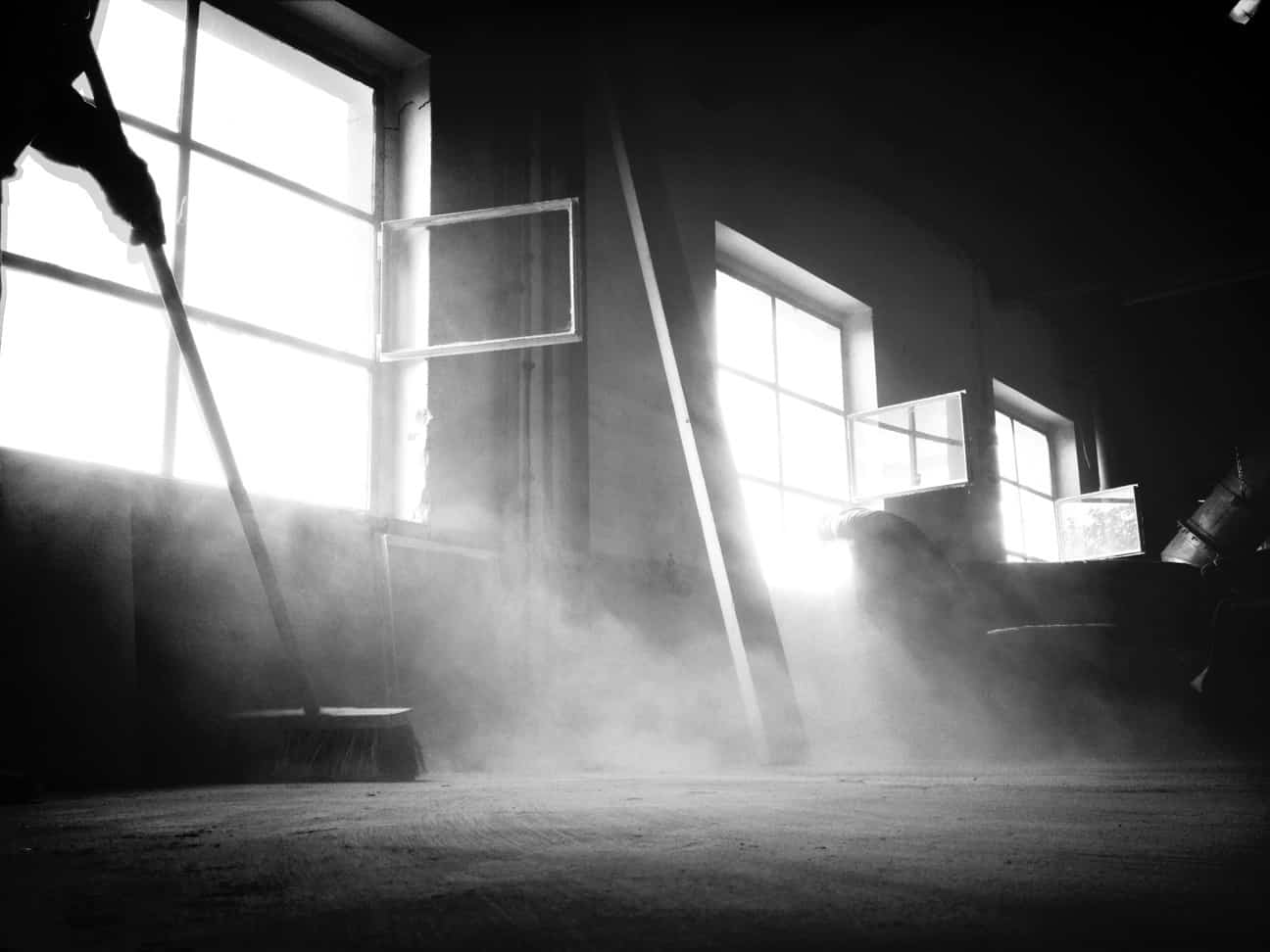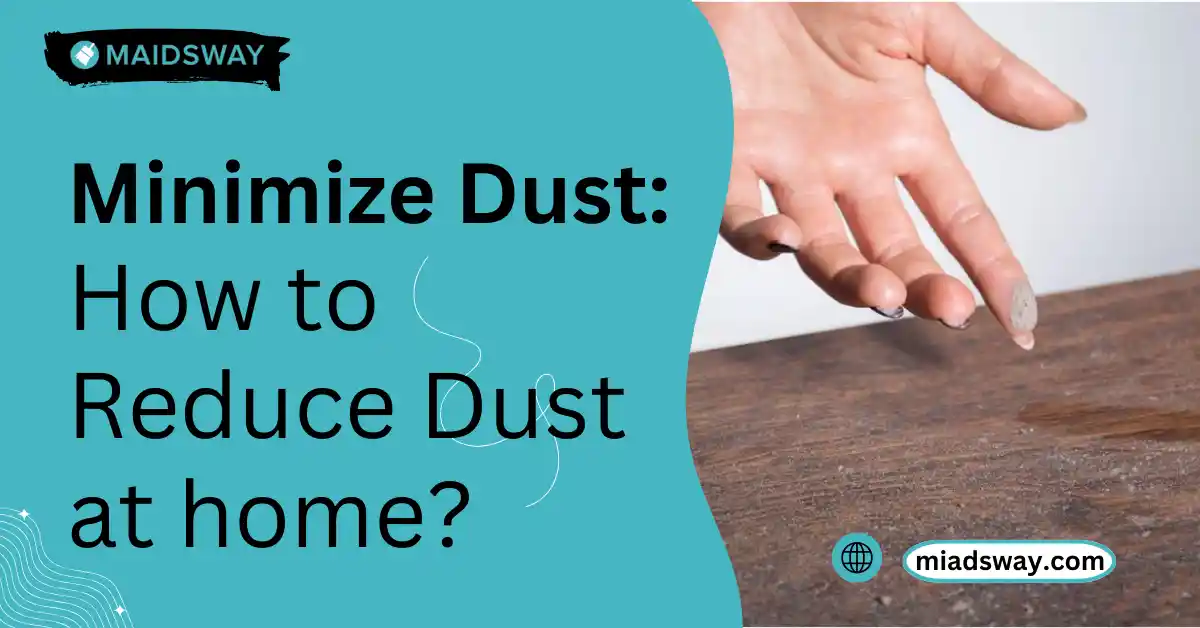Reduce Dust – Maidsway Cleaning Services
Dust originates from various sources, including dead skin cells, bedding, furniture, and clothing. Additionally, surfaces or materials made of fibers can create dust.
Dust may be a constant annoyance in every family. Therefore, it is critical to understand how to reduce dust and have a clean, healthy living environment. Everyone wants to reduce dust, whether it causes allergies or makes their home look messy. In this post, we’ll look at practical dust-reduction measures for the house, focusing on dust-removal procedures and air-cleaning tips.

Minimize Dust: How to Reduce Dust at Home
1- Regular Cleaning
Regular cleaning is the most efficient method for reducing dust in the home. Dust collects rapidly, so develop a regular dusting regimen, vacuuming, and wiping surfaces. Use a microfiber cloth or an electrostatic duster to catch dust particles rather than move them around. Consider locations where dust collects, such as shelves, gadgets, and baseboards.
2- Invest in High-Quality Air Filters
One of the most effective ways to eliminate dust from the air is to install high-quality air filters in your home. HEPA (High-Efficiency Particulate Air) filters are especially effective, capturing up to 99.97% of airborne particles like dust, pollen, and pet dander. Consider installing these filters in your HVAC system, and remember to replace them regularly to keep them operating efficiently. Using a portable air purifier with a HEPA filter in areas where dust is common can also aid in dust removal.
3- Minimize Clutter
Cluttered places attract dust. The more objects you have on shelves, countertops, and floors, the more places dust can gather. Declutter your living spaces and keep only essential items in the open to reduce dust. To avoid dust collection, store other goods in locked cabinets or containers.

4- Wash Bedding and Fabrics Regularly
Bedding, drapes, and upholstery are all great dust collectors. To reduce dust accumulation, wash your linens, pillowcases, and blankets in hot water once a week. Vacuum any upholstered furniture and clean or replace drapes regularly. For further protection, use allergen-proof coverings on mattresses and pillows to help eliminate dust from the air in your bedroom.
5- Keep Floors Clean
Floors are another place where dust can gather. Keep your carpets, hardwood floors, and tiles clean to reduce dust in your home. Vacuum carpets and rugs at least once a week, and use a vacuum cleaner with a HEPA filter to ensure efficient dust removal. Use a moist mop to capture dust and keep it from getting airborne on hard floors.

6- Groom Pets Regularly
Pets can be a major dust producer, particularly if they lose hair and skin flakes. Regular maintenance, such as brushing and bathing your pets, will help reduce the dust they produce in your home. Additionally, cleaning pet bedding and vacuuming areas where your pets spend a lot of time might help to reduce dust.
7- Identify Dust Sources
Identifying and managing dust sources in your house is critical for long-term dust management. Ensure your windows and doors are properly sealed to keep dust out of your home. If you have a fireplace or a wood stove, be aware of the dust and ash that can accumulate from their use. Proper ventilation and exhaust fans in kitchens and bathrooms can also help to eliminate dust from the air.
8- Wash Ai Vents and Ceiling Fans
Air vents and ceiling fans are sometimes disregarded, yet they can greatly improve dust circulation in your home. Make careful to clean your ceiling fans’ blades and vents regularly. This will help prevent dust from blowing around the house, making the air cleaner and fresher.
Half Is Produced Inside; Half Comes From Outside
A study conducted by the Environmental Science & Technology Journal found that 60 percent of indoor dust is produced outside, much of which comes from airborne particles contained in soil, plants, and animals.
Have You Heard Of The Dust Bowl?
Arid parts of the country are particularly prone to dust. The most famous example is the Dust Bowl of the 1930s when a combination of drought and agricultural practices caused farms in the Midwest to dry out. As the winds progressed, they picked up dry soil, creating black blizzards, otherwise known as dust storms. While normal conditions are far from these extremes, nature is the biggest creator of dust particles.

- Install door sweeps on the bottoms of doors that lead outside. These strips, which have either a vinyl flap or a polyester brush attached to them, are generally installed on the interior of the door.
- They block the gap between the door and the threshold, keeping out dirt and pests.
- Apply weather stripping to draft doors and windows. Gaps not only let precious heating or cool air out, but they also let in drafts and plenty of dust.
- Use high-efficiency furnace filters and room filters. Install window screens to keep out large particles and flying insects.
Conclusion
Dust is an inherent part of life, but with the correct tactics, you can know how to reduce dust at home and live in a cleaner, healthier atmosphere. You may reduce dust collection by implementing regular cleaning procedures, investing in high-quality air filters, managing humidity, and addressing dust sources. Implement these strategies and techniques to keep your home clean and dust-free.
How to get dust out of the air?
Use a HEPA air purifier to capture airborne dust particles, and keep windows and doors closed to minimize outside dust from entering your home.
How often should I change my air filter to reduce dust?
Change your air filter every 1-3 months, depending on your home's dust levels and the type of filter you use.
Is vacuuming effective for removing dust from the air?
Vacuuming with a HEPA filter can help remove dust from floors and prevent it from becoming airborne, but it won't remove existing dust from the air.
Do ceiling fans increase dust in the air?
Yes, ceiling fans can stir up dust if not cleaned regularly, so it's important to dust the blades frequently to prevent dust from circulating.

